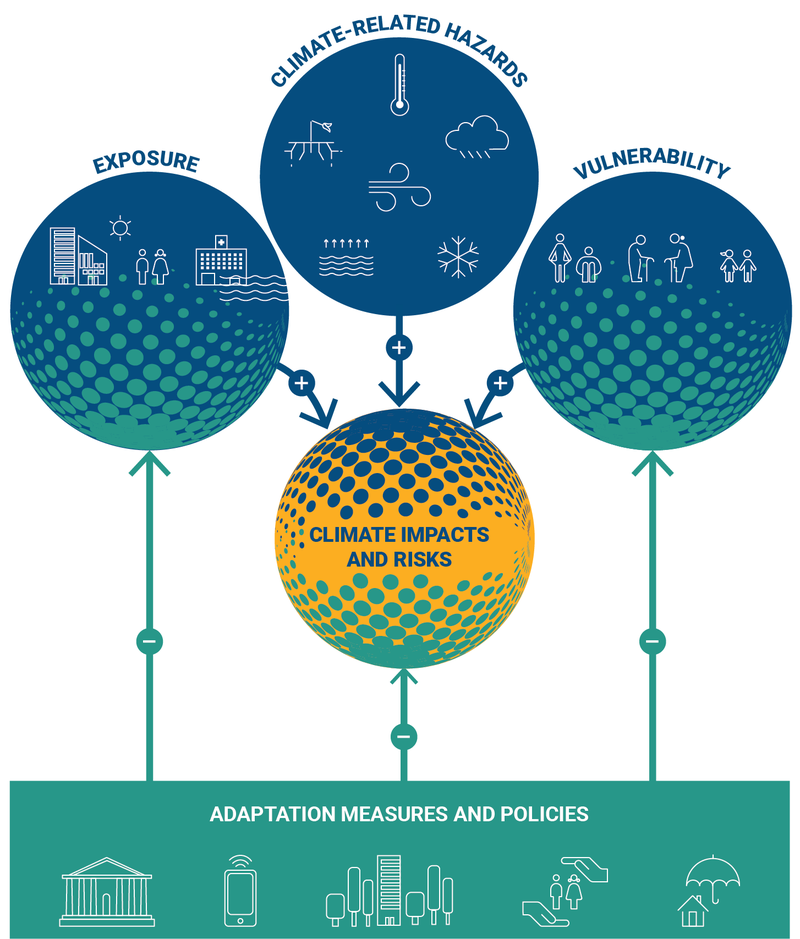All official European Union website addresses are in the europa.eu domain.
See all EU institutions and bodiesIntroduction
Now you've finished the preparatory tasks in Step 1, it's time to evaluate the climate risks and vulnerabilities in your area. Step 2 will walk you through this process – by defining the essential elements of your risk assessment (Step 2.1), identifying your specific risks, emphasising the significance of vulnerabilities and cross-regional impacts (Step 2.2) and, ultimately, assessing the climate risks (Step 2.3). This will help you highlight key risks and set adaptation objectives (Step 2.4), providing a clear direction for your adaptation planning efforts.

Climate risk results from a combination of local conditions, including climate hazards, exposure and vulnerability. Adaptation measures and policies are essential in reducing the overall risk, aiming to limit climate impacts and improve resilience within communities and systems. Planning adaptation at local and regional level requires a good grasp of the following four factors to produce a climate risk assessment.

Understanding the concept of risk

Figure 2 Components of climate risks
Notes: This figure shows where adaptation policies and measures fit in. They aim to increase overall climate resilience by reducing exposure or vulnerability.
Source: Adapted from IPCC, 2023
Climate-related hazards
Exposure
Vulnerability
Adaptation response
Current climate conditions and how they will change in the future. These conditions will determine the likelihood of an area being affected by extreme events (e.g. heatwaves) or slow-onset events (e.g. sea-level rise).
A heatwave strikes a city.
Presence of people, infrastructure or ecosystems in areas that could be adversely affected.
People and services are affected by the heatwave.
The susceptibility of exposed systems and components to be adversely affected, influenced by:
- Sensitivity - The degree to which a system or species is affected, either adversely or positively by climate variability or change.
Pregnant women are more sensitive to heatwaves.
- Adaptive capacity - The ability of people, sectors or systems to adapt to potential damage, seize opportunities or respond to consequences. Adaptive capacity involves adjusting behaviours, resources and technologies. Factors hindering change or reducing resources decrease adaptive capacity, while openness to innovation enhances it.
Wealthier people have the means to insulate their houses better.
Policies put in place and actions taken to reduce overall risk and increase overall resilience by:
- reducing exposure to hazards of people, assets, or the environment.
The city authority expands green spaces.
- reducing vulnerability through enhancing adaptive capacity, awareness campaigns, improved health infrastructure, boosting employment levels, and investment in research and development.
The city authority takes measures to tackle poverty.
Language preference detected
Do you want to see the page translated into ?


